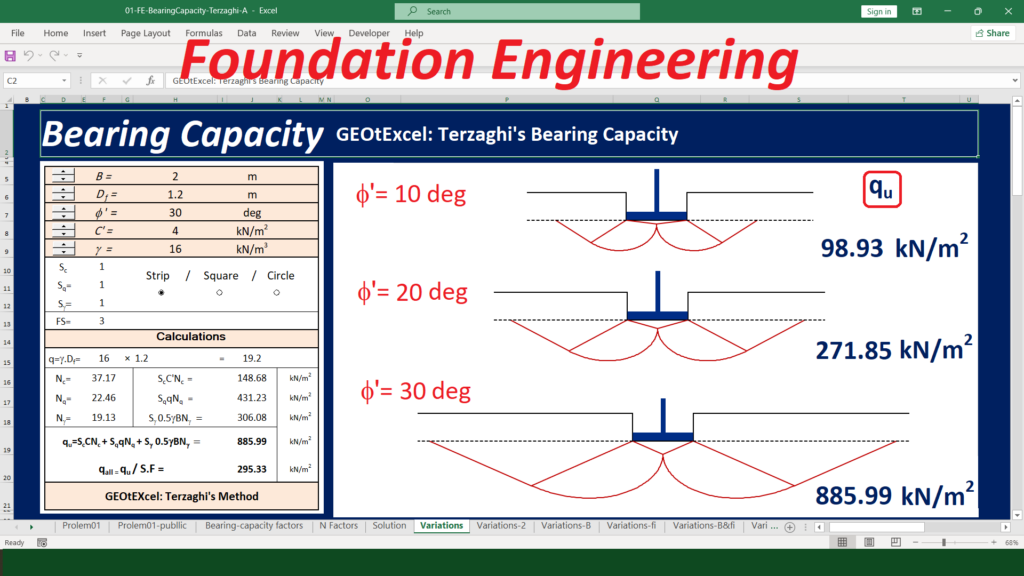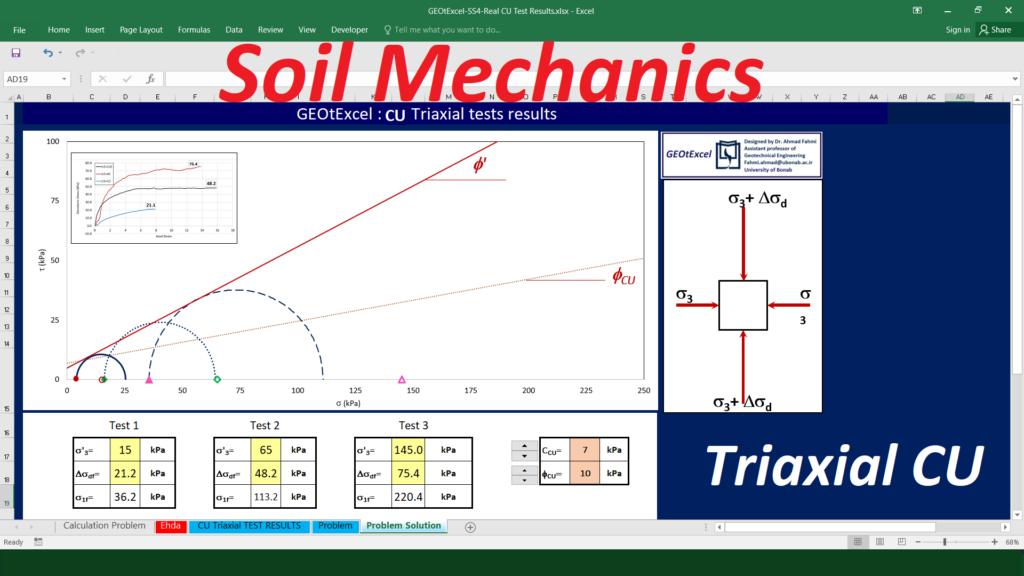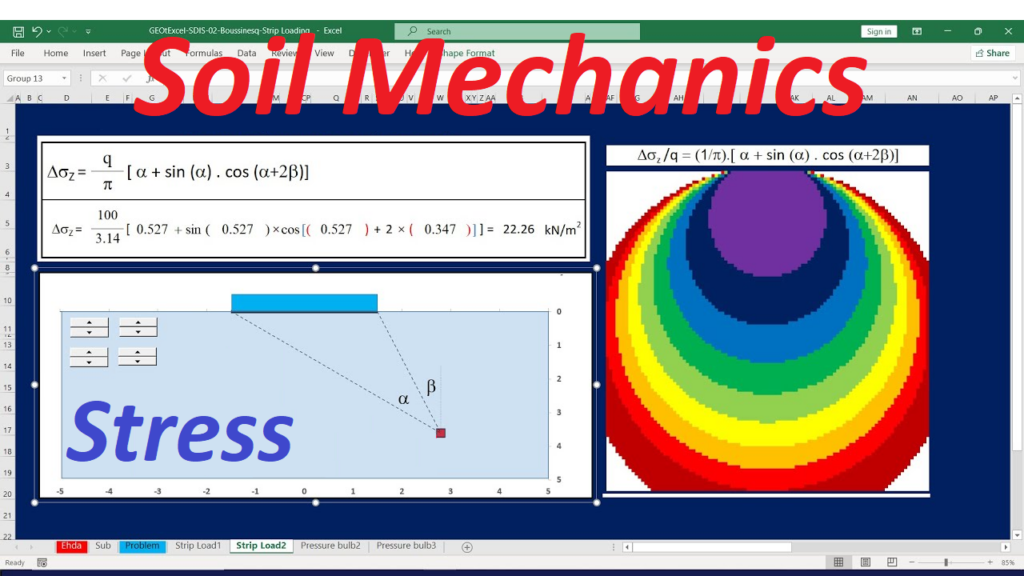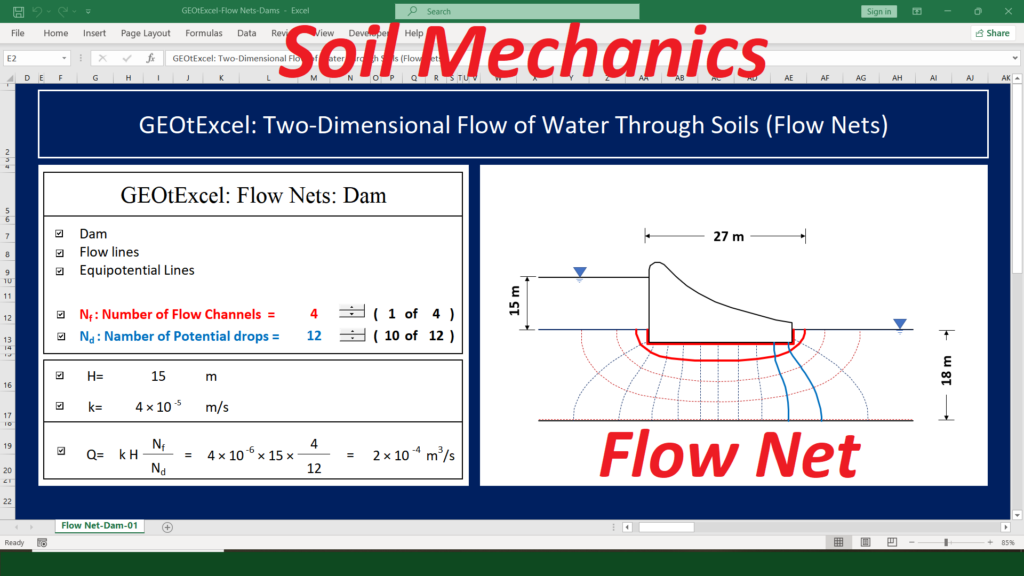Excel Spreadsheet: #foundation_engineering #bearing_capacity #excel_spreadsheet :
The failure zone under a foundation can be divided into three key parts:
1- Triangular Zone: This zone, directly beneath the foundation, fails in a triangular pattern due to compression. Higher friction angles result in a larger triangular zone, as the soil can better withstand compression without failure.
2- Radial (Logarithmic Spiral) Shear Zone: This zone represents the path of soil failure around the foundation in a spiral pattern. With higher friction angles, the radial shear zone tends to be larger, as the soil can resist shear stresses more effectively.
3- Triangular Rankine Passive Zone: Located outside the failure surface, this zone is under passive stress and contributes to the bearing capacity. Higher friction angles lead to a larger Rankine passive zone, providing more support to the foundation.
💎 In summary, higher friction angles result in larger triple zones, including the triangular, radial shear, and Rankine passive zones. This enlargement collectively contributes to a higher bearing capacity for the foundation.

The Link on the YouTube Channel:










